 Opinion
Opinion
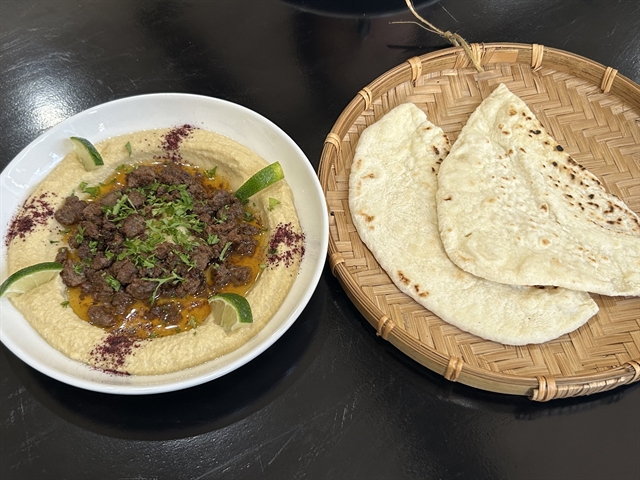
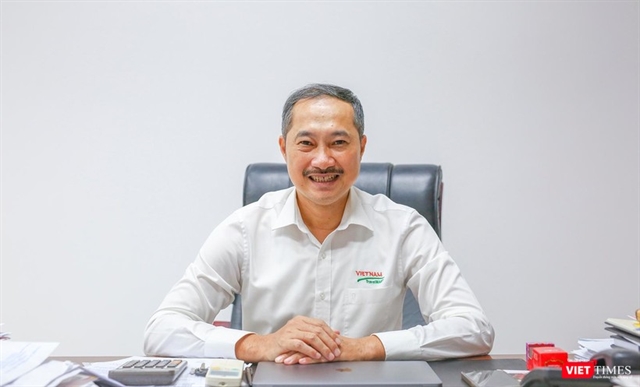 |
| Cao Trí Dũng, Chairman of Đà Nẵng's Tourism Association and the Vietnam Society of Travel Agents. — Photo viettimes.vn |
With less than four months left in 2025, Việt Nam’s tourism industry is ramping up efforts to meet the ambitious goals set under Government Resolution 226, which aims to attract 25 million international visitors and 150 million domestic travellers.
Cao Trí Dũng, Chairman of Đà Nẵng’s Tourism Association and the Vietnam Society of Travel Agents, shared insights on how the sector is mobilising resources and initiatives to turn those targets into reality.
How are Vietnamese tourism businesses working to meet the ambitious targets set out in Government Resolution 226?
Việt Nam’s tourism industry is at a decisive turning point. We are receiving unprecedented support from the Government, the Prime Minister and all relevant ministries as the country enters a new era – one where Việt Nam positions itself as a nation with strong regional competitiveness, significant economic scale and one of the fastest growth rates in the world.
Resolution 226 sets highly ambitious targets: by 2025, we aim to welcome 25 million international visitors and 150 million domestic travellers. These figures are not only aspirational but also place considerable pressure on the entire tourism ecosystem, from state agencies to private enterprises.
The Vietnam Tourism Association has acted quickly, launching a comprehensive action plan to mobilise resources across all member organisations. The key is to turn the Resolution’s vision into coordinated, concrete action.
Within this effort, the Vietnam Society of Travel Agents serves as a central pillar responsible for implementing the plan during the final months of 2025, following the roadmap issued by the association.
The first step involves organising a series of familiarisation and inspection trips from major source markets, including Northeast Asia, Southeast Asia, Europe, Australia and the US, to destinations across Việt Nam. These are markets with high 'policy sensitivity,' meaning they respond quickly to favourable visa and travel conditions.
By working with international tour operators, we can introduce Việt Nam’s new tourism products and updated Government policies directly to the global market.
At the same time, we are holding a series of large-scale promotional events both nationally and locally. Among them are the MICE EXPO in Hà Nội from September 25 to 27 and the Đà Nẵng International Tourism Festival on October 15 and 16, which will gather more than 100 international enterprises and over 200 domestic travel agencies, including several of the world’s largest online travel platforms.
These events are designed to showcase new tourism products, highlight the Government’s supportive policies and connect Vietnamese businesses with global partners.
Following these, we will co-host the Vietnam Tour Operators Festival with Quảng Ninh Province in late October or early November. The event will serve as an important forum for dialogue and cooperation, helping enterprises develop specialised tourism products and identify strategies for fast-growing markets.
Between now and the end of the year, we are also leading promotional missions abroad, such as to Malaysia and South Korea, while inviting inbound delegations including international media, influencers and KOLs to experience Việt Nam’s destinations firsthand.
Through these practical actions, tour operators nationwide are not waiting passively for policy changes but are actively contributing to the realisation of Resolution 226’s challenging targets.
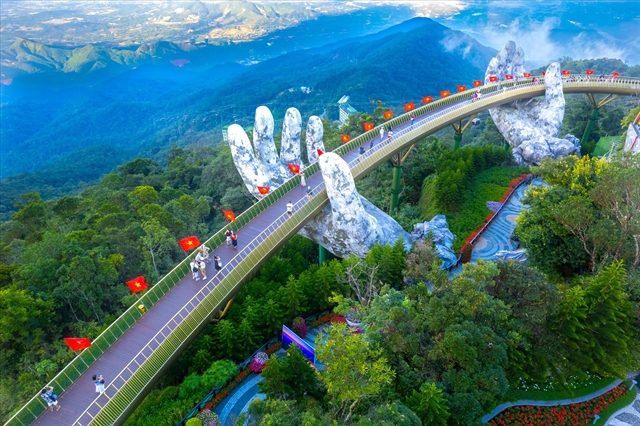 |
| Golden Bridge, a famous check-in spot popular among international visitors in Đà Nẵng. — VNA/VNS Photo Nguyễn Trình |
Đà Nẵng is often seen as a model tourism city. What are its specific plans for the rest of 2025?
Đà Nẵng is entering a new phase of growth – broader in scope, richer in potential and full of opportunity. With its expanded administrative boundaries and improved infrastructure, the city is emerging as one of Southeast Asia’s most dynamic tourism hubs.
In the first eight months of 2025, Đà Nẵng welcomed nearly 8 million domestic and 5 million international visitors, accounting for roughly 30 per cent of all international arrivals to Việt Nam.
For the full year, Đà Nẵng aims to receive 18 million visitors, including 8 million international ones – a bold target, especially given the limited time remaining and with key markets having already undergone extensive promotional activity since the start of the year, leaving little room for additional momentum.
To meet this challenge, Đà Nẵng has launched several independent initiatives. The Đà Nẵng Tourism Festival and the 2025 Tourism Stimulus Programme, running from August 30 to September 30 and again from December 1 to 31, are among the city’s key drivers.
These programmes introduce entirely new experiences, including thousands of 'Culinary Passports', 'Heritage Passports' and 'Event Passports', encouraging visitors to explore the city’s rich mix of food, culture and entertainment.
We are promoting these programmes across both B2B and B2C channels. On the business side, we are working closely with domestic and international tour operators. On the consumer side, we are using global online travel agencies (OTAs) and social media to reach travellers directly, tapping into large customer bases worldwide.
Our marketing push is also targeting high-sensitivity markets that can generate immediate growth, notably the Philippines, Indonesia, India and Taiwan (China), through intensive campaigns running continuously until the end of the year.
The goal is for Đà Nẵng, together with the rest of the country, to successfully fulfil the highly demanding targets set by the Resolution.
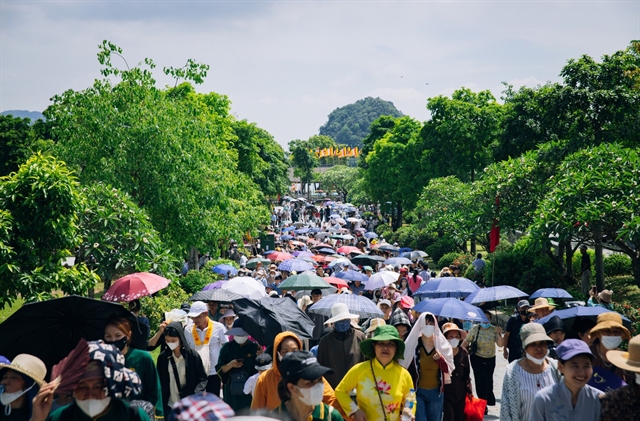 |
| Visitors pay homage to the Buddha’s relics at Tam Chúc Pagoda during the 2025 Vesak Day celebrations. — VNA/VNS Photo Vương Nam |
There are fewer than four months left in 2025, yet the tourism sector still needs to attract around 11 million more visitors to meet its goal. Is that realistic?
The target is undeniably challenging. Tourism is an industry where policy changes take time to show results, particularly for long-haul markets such as Europe, Australia and the US, where travellers typically plan trips six months to a year in advance.
Nevertheless, we have carefully structured our plans to make the most of the time remaining. Over the next few months, our priority will be nearby markets that respond quickly to new policies and travel incentives. These include South Korea, China, Japan, Taiwan (China), the Philippines, Indonesia, Malaysia, Thailand, Singapore and India, all of which have strong potential to deliver large visitor numbers in a short period.
With well-targeted campaigns, we believe these markets could increase arrivals by 20 to 30 per cent compared to last year. For more distant markets, where results take longer to emerge, we still expect an increase of around 15 per cent in November and December.
To achieve the Government’s goal of 25 million international arrivals, Việt Nam will need to welcome between 2.5 and 2.57 million visitors each month for the remainder of the year – a formidable challenge, but one that can be met through a unified national effort and effective coordination across the sector.
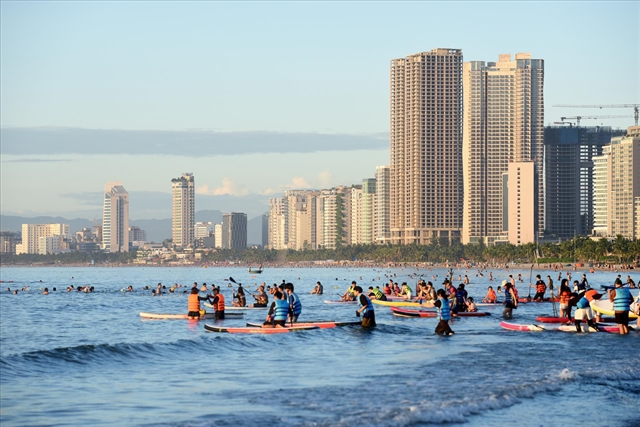 |
| Tourists row boats near a beach in Đà Nẵng. — VNA/VNS Photo Thanh Hòa |
Despite the pressure, international arrivals have remained strong even in the recent low season. What explains this?
The Government’s recent visa and entry measures have clearly hit the mark. By swiftly expanding visa exemptions, extending permitted stays and introducing tailored visa privileges for experts, scientists and high-level guests, the Government has delivered policies that are well targeted and responsive, matching the expectations of the business community and the needs of key source markets.
The impact of these policies has already become clear in 2025, with strong growth recorded in several markets benefiting from relaxed visa rules. The impressive rise in visitor numbers this year can be attributed to the Government’s supportive policies, the dynamism of national and local promotion agencies and the adaptability of businesses themselves.
Tourism businesses have been quick to read market trends and design tailored stimulus products. They have worked hand in hand with local governments, ministries and associations to leverage favourable policies and reach the right audiences.
These policies form both the foundation and the launch pad for Việt Nam’s tourism development in 2025 and beyond. The ongoing expansion of visa facilitation, combined with the strategic framework of Resolution 226, will continue to produce results throughout the remainder of this year and even more strongly from 2026 onward.
Industry experts and the business community agree that the full effect of these measures will become most evident next year, particularly in long-haul markets.
With more time for preparation, I am confident that Việt Nam’s tourism industry will achieve its growth targets in 2026. — VNS